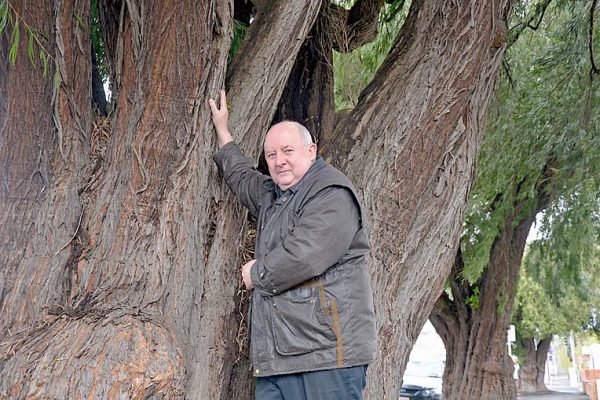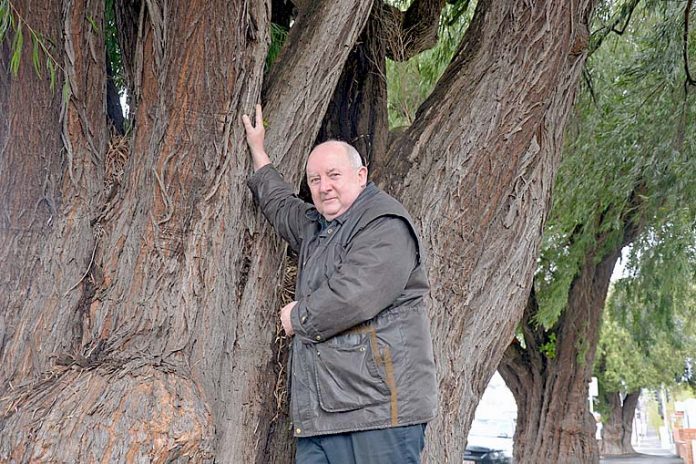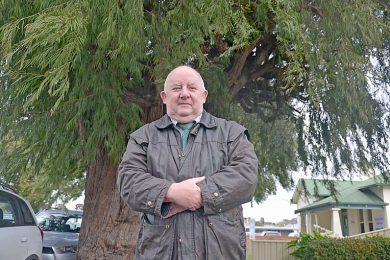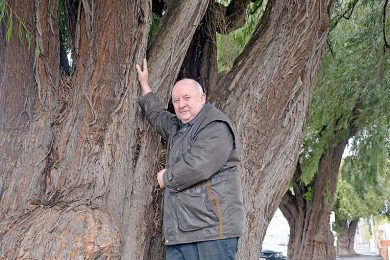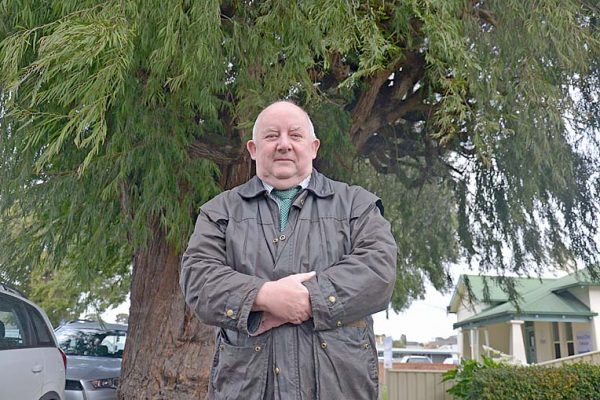
THIRTEEN weeping willow trees lining Crouch Street South will be removed next week to the dismay of prominent Mount Gambier surgeon Barney McCusker.
Of the 13 trees, 10 are causing severe damage to the kerb and watertable and impacting the flow of storm water, while eight of the trees are continually lopped by SA Power Networks to meet requirements for power line clearance.
Mount Gambier City Council approved the removal of the trees in August and notified businesses between Sturt Street and Commercial Street last week.
Mr McCusker, whose surgery has been located at 13 Crouch Street South since 1984, said he was disappointed there was no prior community consultation.
“The first I became aware of this was last Friday, approximately nine days before they were due to be removed, via a letter dropped into our office,” he said.
“It’s very sad and disappointing this is how council communicates with their ratepayers.
“This is a matter of notification without consultation and it’s an example of how not to proceed with matters like this.”
He said he had spoken to a number of patients and neighbouring business owners who were “shocked” to learn the trees would be removed.
“I certainly understand council have their view they need to go – I’m not convinced about that but I have to defer to their opinion as they are the experts,” Mr McCusker said.
“I did track down the arborist at the council who said they do have to go for a variety of reasons, but even he freely admits once these trees are removed the street is going to look like a really bad haircut for about 10 years.
“I understand on one side of the road the trees are under the power line, perhaps the trees could have been removed on that side, leaving one side with some trees.
“That’s the discussion we could have had with council had they ever sought us out.”
The removal of the trees will allow for streetscaping upgrade works along Crouch Street as part of council’s ongoing city centre redevelopment project.
City infrastructure general manager Nick Serle said infrastructure damage would persist for the lifetime of the trees.
“No one likes to see beautiful trees cut down but they do need to go,” Mr Serle said.
“The trees are massive and the root systems are damaging the water table, while the undulating areas of the footpath are a safety issue.”
He said there was no scope to carry out relevant repairs to the kerbing without damaging the trees structural integrity.
“There was not a lot to consult on from that perspective,” he said.
“We will absolutely consult with the community around the replacement of the trees – consultation will occur around how many and the type of trees to replace the weeping willows along that stretch of Crouch Street.”
Mr McCusker guessed the trees likely pre-date World War II.
“No one can actually tell me how old they are but given their size I would guess they are very old,” he said.
“They are beautiful and I enjoy coming to work everyday and seeing the tree lined street – I will certainly miss these magnificent trees.”
